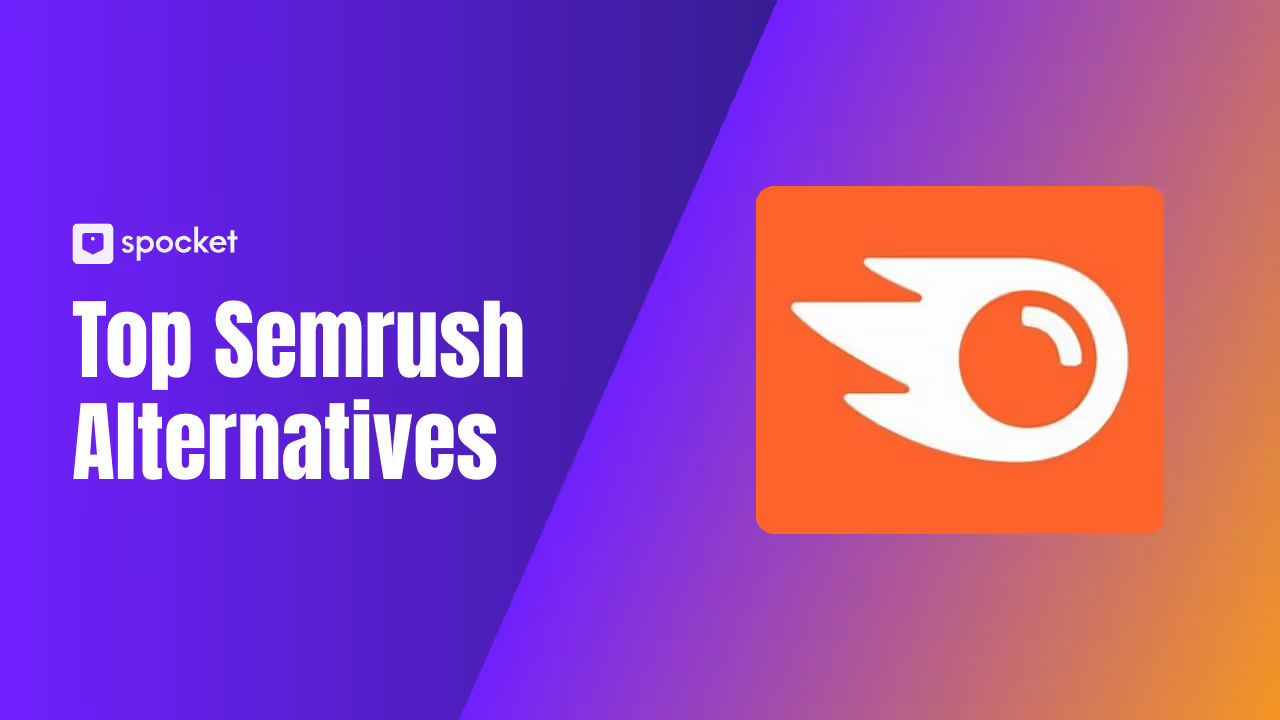If you’ve been leaning on Freepik for your design assets, you’re not alone—but you might be short-changing your creative potential. Many creators face high costs, licensing gray areas, or trouble finding the right file type at the right time. When your workflow is delayed or you’re second-guessing usage rights, it affects more than your productivity—it affects your confidence. You shouldn’t have to scroll endlessly or settle for compromises. The good news is that there are other tools—more flexible ones—ready for exactly the kind of work you do.
Whether you’re building presentations, selling images, designing for print, or running an agency, better Freepik alternatives exist. Here’s a closer look at platforms worth using instead of Freepik in 2025.
Why Choose Freepik Alternatives?
If you're spending time adapting your workflow to match Freepik’s limits, you might be missing better tools. There are platforms that give you faster access to exactly what you need—without sorting through irrelevant results or dealing with usage restrictions. Instead of relying on one large but general library, you can turn to sites that focus on specific content types, licenses, or professional goals.
Canva makes it simple to build social graphics and templates without a separate editor. Envato Elements supports designers who need everything from fonts to music in one subscription. And Vexels gives entrepreneurs editable designs built for merchandise and print-on-demand products. These are not just replacements—they’re purpose-built solutions.
Many Freepik alternatives also come with clearer licensing. This matters if you're working on commercial designs, brand campaigns, or anything that goes to print. With Freepik, commercial usage can mean double-checking small print or needing extra permissions. With others, what you get is already cleared and ready.
The Best Freepik Alternatives in 2025
Here are the best Freepik alternatives in 2025:
1. Vecteezy
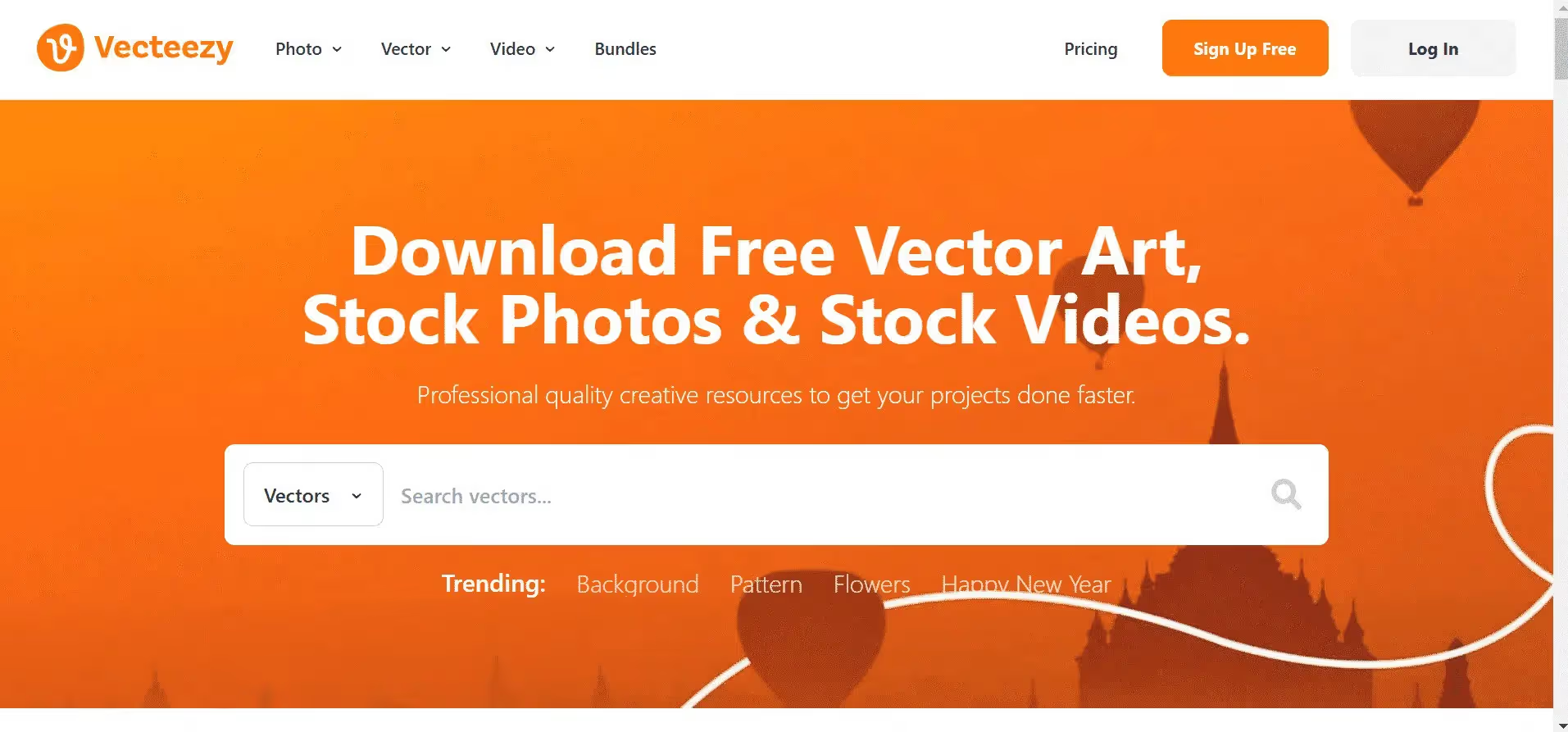
Vecteezy is often the first place users go after outgrowing Freepik’s limitations. It offers thousands of free vectors, photos, and videos, with a clean interface that doesn’t overcomplicate the process. Unlike Freepik, Vecteezy clearly separates free and Pro content, so you’re not constantly clicking on locked assets.
The licensing is another area where Vecteezy stands out. Free downloads often allow personal and commercial use with attribution, and the Pro plan includes full commercial rights without extra fees. This gives freelancers and small teams more confidence when using content in professional projects.
Vecteezy also includes a browser-based editor that lets you adjust color, size, and layout before downloading. That’s something not many other platforms offer, especially at no cost. It saves time and lets you work without importing everything into separate software.
Pricing is straightforward: the free plan is generous, and the Pro version costs around $14/month if billed annually. For consistent asset use, that’s one of the lowest prices available. If your work depends on finding usable files fast—with fewer steps and fewer surprises—Vecteezy is a platform worth adding to your workflow.
2. Shutterstock

Shutterstock is built for professionals who need access to a broad media library with consistent quality. Its catalog includes millions of high-resolution photos, illustrations, vectors, and video clips. For designers, marketers, and agencies, this means you can pull from a deep archive without worrying about pixel quality or missing formats.
One reason users move from Freepik to Shutterstock is licensing. All downloads come with clear commercial rights, which removes a lot of second-guessing. Shutterstock also offers curated collections by category and industry, so you spend less time hunting down the right image. The advanced search filters make it easier to find assets that match specific dimensions, styles, or usage types.
Pricing starts at $49/month for 10 downloads, and custom plans are available for teams or higher-volume use. Discounts are often provided for long-term subscribers. If your projects need polished visuals that are ready to go to print or publication, Shutterstock gives you the reliability Freepik can’t always guarantee.
3. iStock

iStock, part of the Getty Images network, is a reliable option for professionals who want access to high-quality visuals without overcomplicating rights or billing. Unlike Freepik, where usage rights can vary depending on asset and plan, iStock maintains a simple royalty-free model. Every download comes with clear commercial permission, so you can use assets in campaigns, websites, or client projects without chasing fine print.
The platform focuses on quality over quantity. While the asset count is smaller than some rivals, iStock curates its collection for usability and visual consistency. You’ll find photos, illustrations, and vectors sorted by themes, making it easy to locate what fits your project’s tone or layout.
Credit packs and subscriptions are available, starting around $29/month for 10 files. You can also opt to pay per download if you don’t need assets regularly. iStock also integrates with apps like Adobe Illustrator, which makes importing and editing faster. If your workflow values clarity and quality, iStock is a smart pick.
4. Adobe Stock
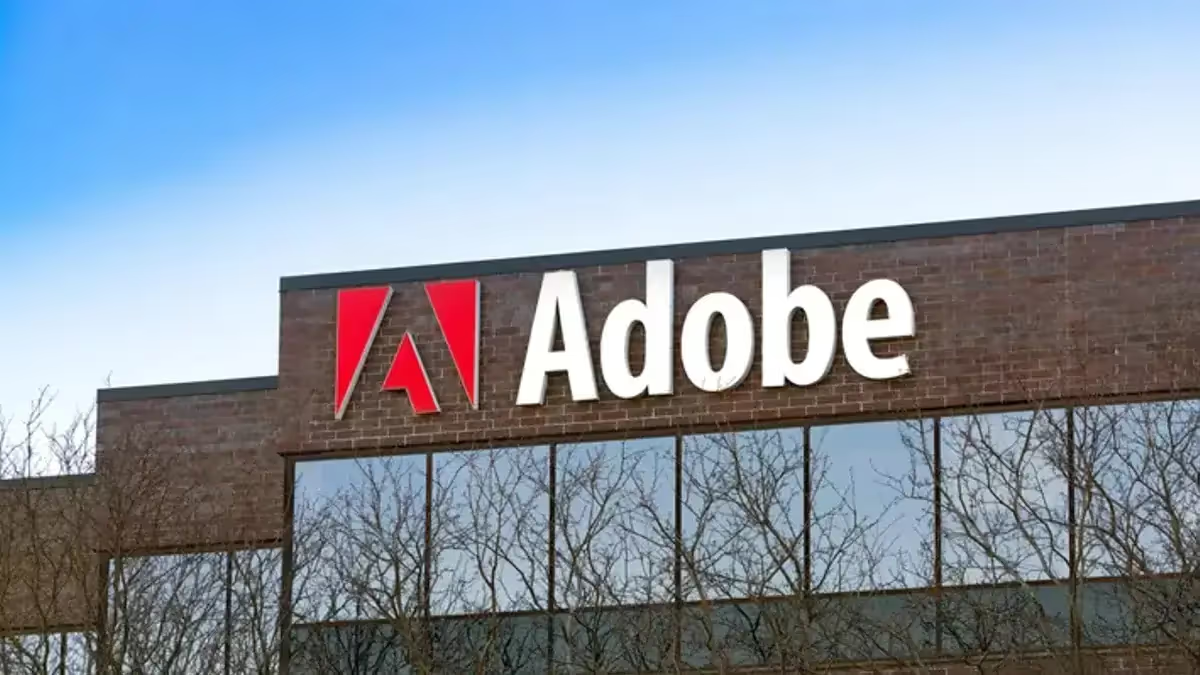
Adobe Stock fits best if you're already working inside Adobe Creative Cloud. It connects directly to Photoshop, Illustrator, and other Adobe apps, letting you license and place visuals without switching platforms. That tight integration saves time and keeps your files organized inside your projects from the start.
The platform provides access to more than 100 million assets—photos, illustrations, vectors, templates, and videos. Every item is cleared for commercial use and backed by Adobe’s standard licensing terms. This simplifies legal compliance, especially when managing client work or published campaigns.
Plans start at $29.99/month for three downloads, and larger tiers offer volume discounts. Adobe Stock also supports credit packs for occasional users. Another benefit is the curated collections for specific use cases—like business presentations, lifestyle branding, or mobile-first campaigns.
If you're already familiar with Adobe tools, Adobe Stock removes friction from your creative process. You’ll spend less time managing files and more time refining your actual designs without jumping between apps or reformatting downloaded content.
5. Unsplash

Unsplash has become one of the most popular platforms for free, high-resolution photography. If you’re tired of digging through Freepik’s mixed-quality images or navigating complex licenses, Unsplash offers a cleaner experience. All assets can be used for commercial projects, and attribution is appreciated but not mandatory.
Its library holds over three million photos, all submitted by a global community of photographers. The platform focuses heavily on real-world aesthetics—natural lighting, everyday settings, and human moments. This makes it a strong choice for brands that want more authenticity in their visual content.
You won’t find vectors or templates here, but the photo quality often exceeds what’s available on paid platforms. With built-in search filters, curated topics, and a minimalist layout, it’s easy to locate photos by mood, composition, or subject.
For power users, the Unsplash+ subscription adds exclusive collections and higher download allowances for around $10/month. If you want clean, relatable imagery without cost or legal clutter, Unsplash is a reliable tool.
6. Pexels
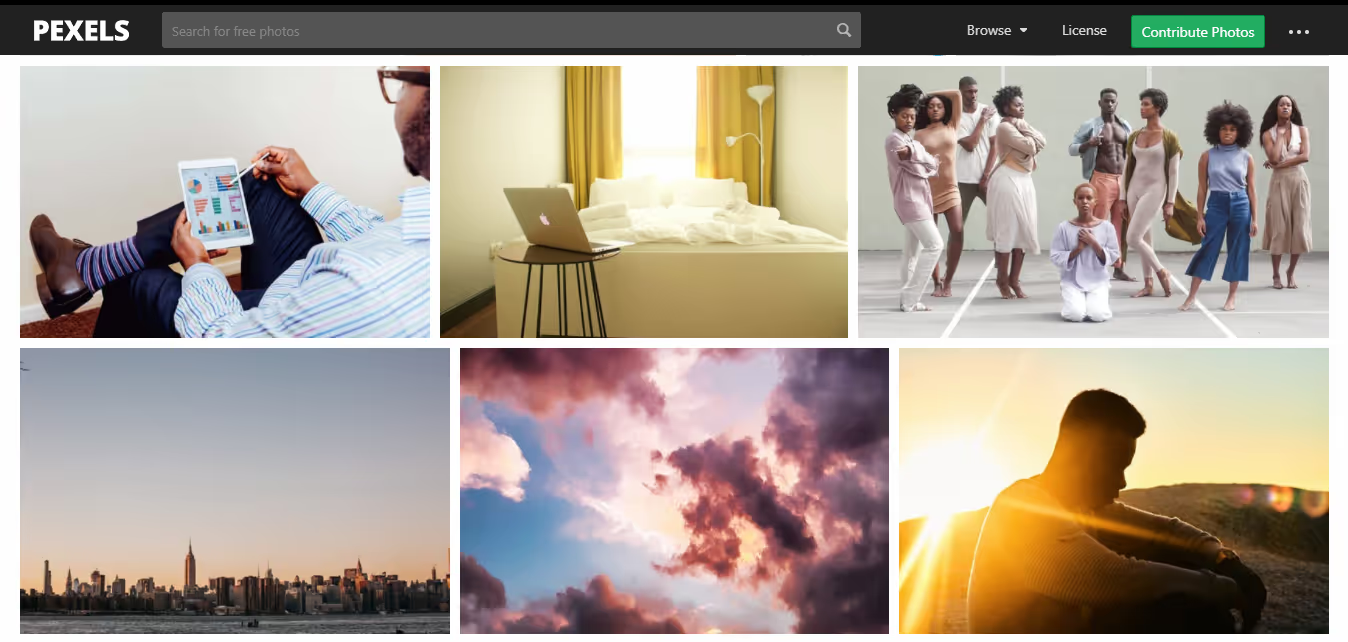
Pexels is widely used by content creators who need high-quality visuals without paying for licenses. It offers both photos and videos, all free to download and cleared for commercial use. Attribution isn’t required, though it’s encouraged, and the platform’s license is easy to understand—even for beginners.
Owned by Canva, Pexels integrates smoothly into Canva’s editor, making it even more useful for users who build content across social platforms, blogs, or marketing materials. You’ll find a wide range of subjects—technology, nature, people, interiors—contributed by creators from around the world.
The search interface is fast and clean, and filters help you narrow results by orientation, color, or size. For teams that publish regularly but can’t afford stock photo subscriptions, Pexels is a dependable solution.
While it doesn’t include design templates or vector files, its strength lies in simplicity. If you need access to a wide variety of natural-looking photos and videos without licenses getting in the way, Pexels gets the job done.
7. Pixabay

Pixabay offers more than just photos—it provides illustrations, vector graphics, stock videos, music, and even sound effects. Everything on the platform is free to use, even for commercial purposes, and no attribution is required. This makes it a practical resource for designers, video editors, educators, and marketers who want media without license headaches.
The site has over 4 million assets, all contributed by a large creative community. Categories are well-labeled, and the search tools allow filtering by type, orientation, and color, which helps speed up your workflow. Unlike Freepik, you won’t be tripping over gated content or attribution rules that change with each download.
Pixabay also includes an image editor that lets you resize or crop before downloading. If you’re using content for presentations, blogs, or background media, the quality is usually more than sufficient. It may not replace paid platforms for high-end design work, but for daily projects or quick turnarounds, it’s one of the most useful free options online.
8. Vexels
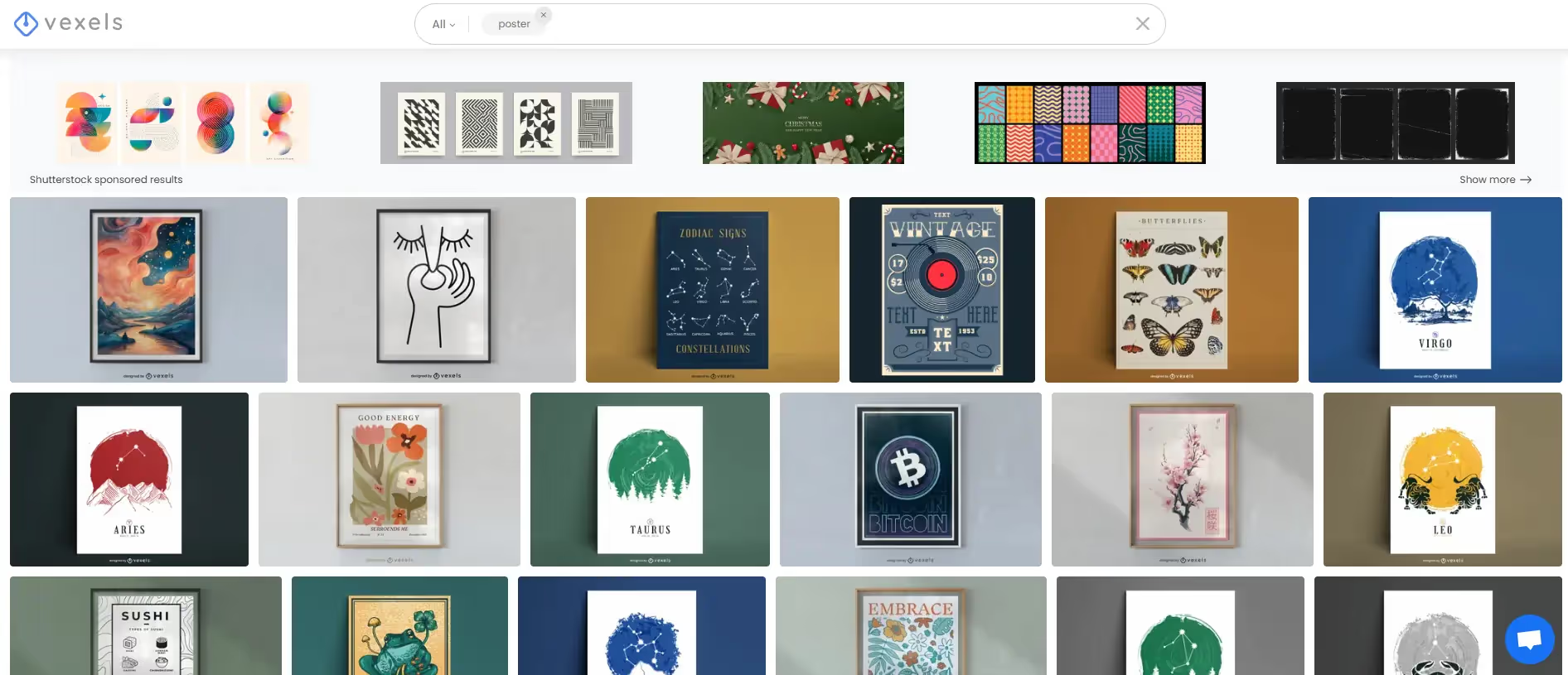
Vexels is designed with creators who sell designs in mind. It focuses on editable vector graphics, T-shirt templates, logo kits, and digital assets tailored for platforms like Etsy, Amazon Merch, and Shopify. Unlike Freepik, where customization might require additional editing tools, Vexels assets are built for direct adaptation and reuse.
You’ll find design packs organized by use case, such as apparel, print-on-demand, or seasonal promotions. Subscribers also get access to a custom design request feature—something most stock platforms don’t offer. This makes Vexels especially appealing to solopreneurs and small businesses trying to stay ahead in product design.
Pricing starts at $29/month, with options that include commercial rights and print licenses. The site also includes mockup tools and an online editor to test how designs will look in real-world formats.
If you’re producing content or merchandise that relies on consistent branding and scalable files, Vexels gives you control over what you use and how you present it.
9. Depositphotos
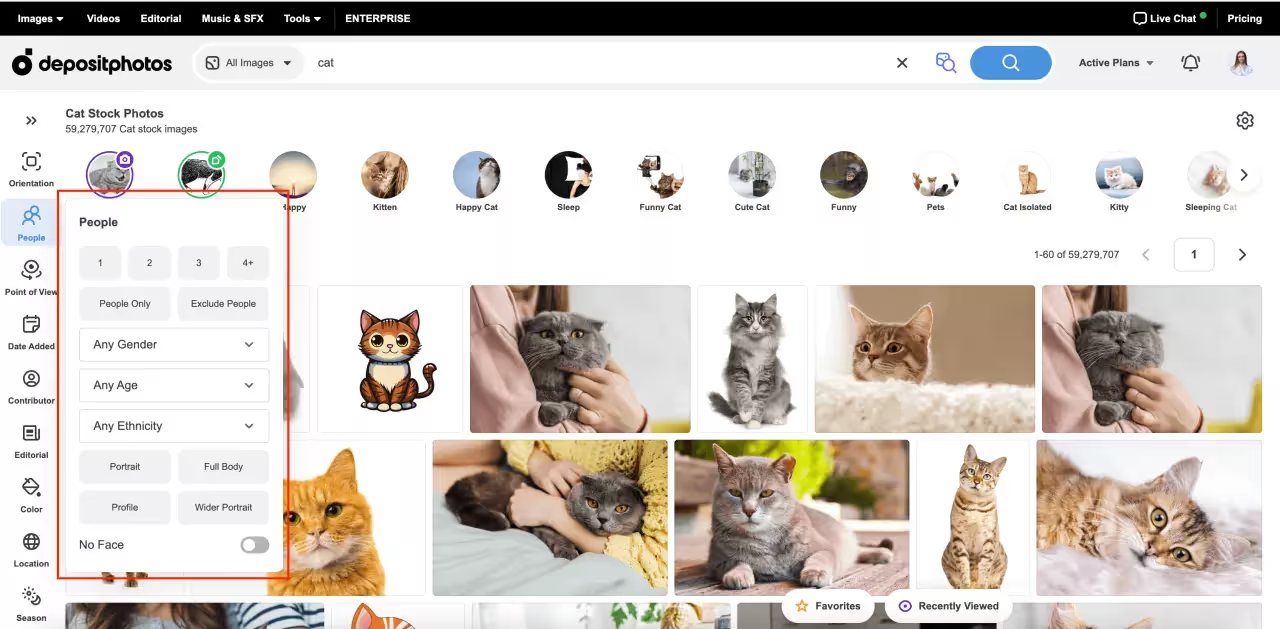
Depositphotos offers a vast collection of over 230 million royalty-free assets, including photos, vectors, videos, and editorial content. It’s a great fit for teams that need visual variety on a budget. The platform is known for frequent sales and flexible plans, making it a practical alternative to Freepik for ongoing commercial use.
The licensing is easy to navigate. All files are cleared for business use, and the extended licenses cover print runs, product packaging, and digital advertising. You can search by orientation, color, contributor, and content type, which makes it easier to build cohesive visuals across projects.
Pricing options include monthly subscriptions and on-demand credit packs. You can start with as little as $9.99 depending on the volume. The platform also offers a background remover, editorial section, and AI-powered search assistant.
If you’re managing client work or high-volume publishing schedules and need reliable visuals with predictable costs, Depositphotos gives you a wide selection without hidden licensing steps.
10. Dreamstime
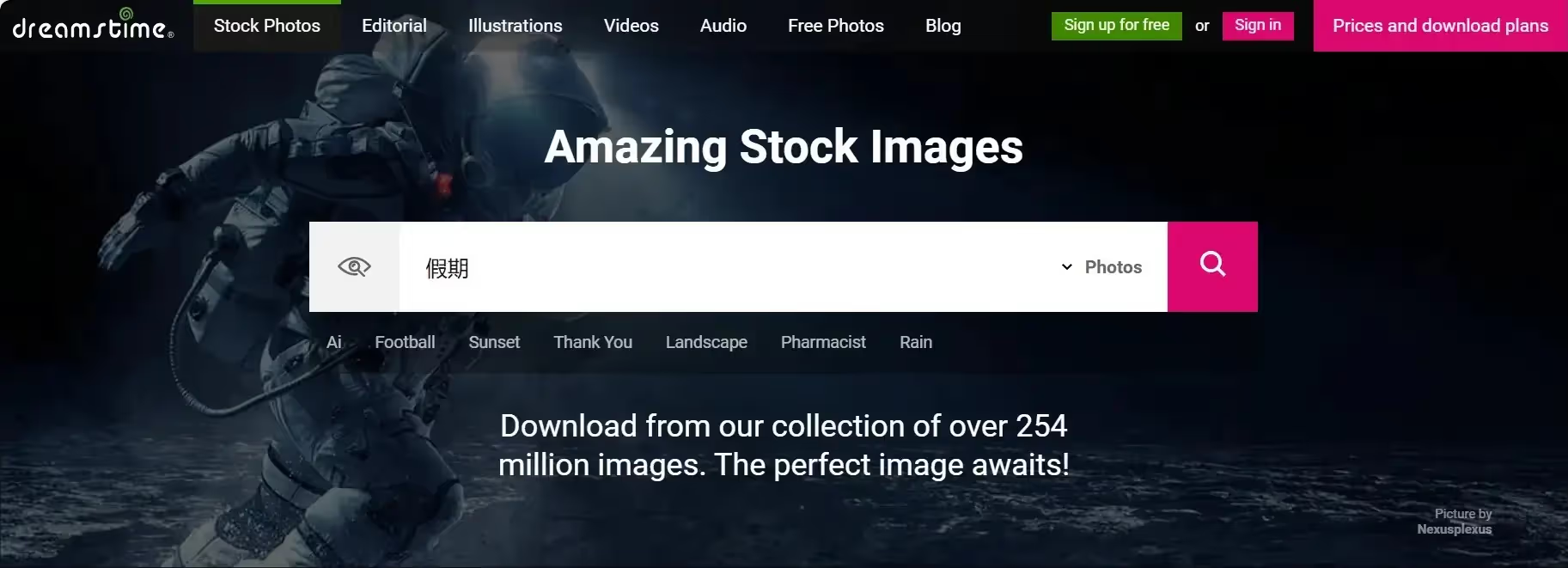
Dreamstime balances affordability with a respectable collection of stock visuals. It provides photos, vector art, clipart, and footage suitable for digital campaigns, print media, and educational content. One key benefit is its hybrid pricing—offering both free assets and tiered plans for premium downloads.
Its free library is larger than many expect, with content allowed for commercial use if attribution is provided. For paid assets, Dreamstime’s licensing is clear and covers most uses, including resellable materials if you choose the extended license.
Users can purchase downloads via credits or subscribe monthly, depending on project needs. The site also supports contributor uploads, which means the collection stays current and varied. Categories are well-organized, and filter tools include freshness, orientation, and file type.
If you're looking to stretch your design budget or need occasional access to licensed media, Dreamstime offers reliability without forcing long-term commitments. It may not have all-in-one tools, but it's a solid choice for sourcing high-resolution assets fast.
11. Canva

Canva stands out by combining an intuitive drag-and-drop editor with a growing media library. Unlike Freepik, which only provides assets, Canva lets you create content directly within your browser or app—whether it’s for social media, printed flyers, or pitch decks.
The free version includes thousands of templates, fonts, icons, and stock photos. For more advanced features like resizing tools, brand kits, and premium assets, the Pro plan starts at $12.99/month. Canva also includes background removers, animation tools, and scheduling functions for social content.
Everything stays within one ecosystem, which is ideal if you're juggling content creation and deadlines. You can even invite collaborators, making it useful for teams or agencies.
For many users, Canva replaces both design software and asset libraries. If you don’t want to hop between platforms and would rather build, export, and publish from one place, Canva delivers that convenience. It’s especially friendly to beginners and marketers without a design background.
12. Envato Elements
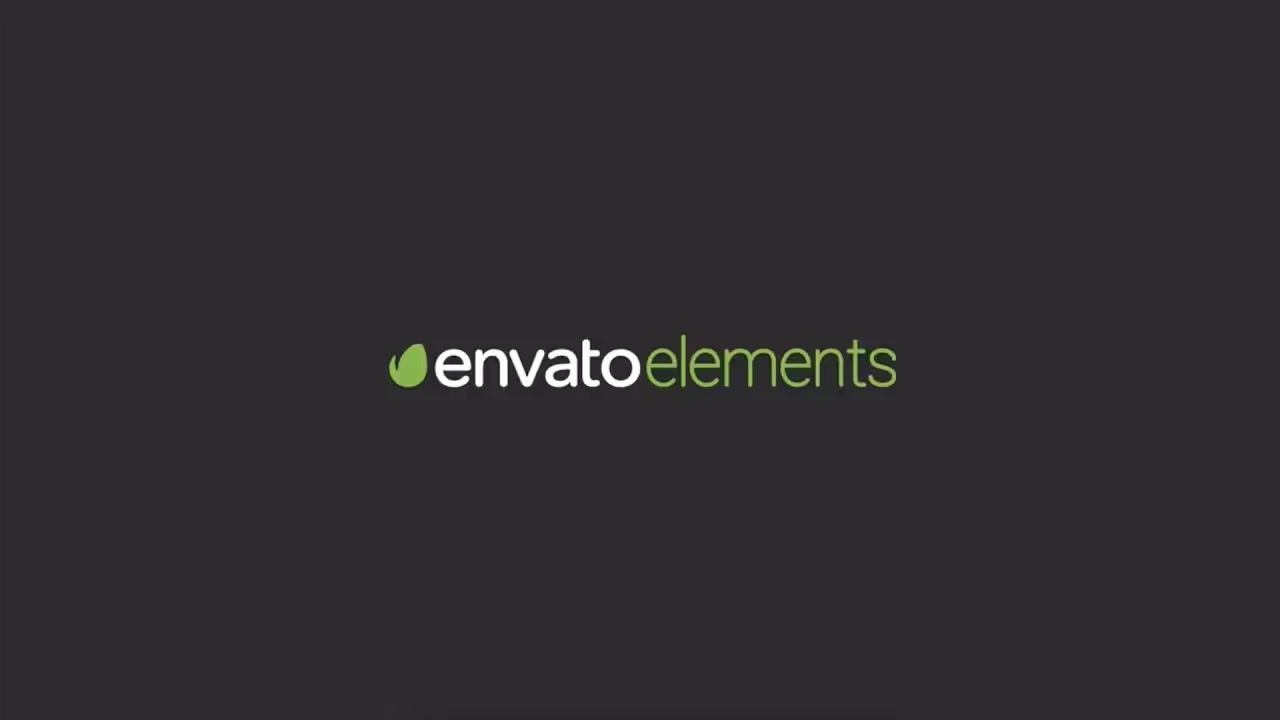
Envato Elements appeals to designers who need a steady stream of content across different formats. Instead of paying per download, you get access to millions of digital assets—photos, illustrations, graphics, fonts, and even video templates—with a single monthly subscription.
Starting at $16.50/month, it’s positioned as a one-stop shop for creatives. The platform is updated regularly and includes WordPress themes, mockups, icons, and presentation slides. All assets are covered under a commercial license, which simplifies usage rights for client projects or business campaigns.
The interface is simple and search-friendly, with tags and filters that help you stay organized. Unlike Freepik, Envato Elements doesn’t gate assets by tier—subscribers get full access across the library.
If you're creating across formats and don’t want to buy separate tools for fonts, images, and layouts, Envato Elements saves time and money. It's particularly helpful for agencies or freelancers managing multiple content types across projects and timelines.
13. Free Images

Free Images offers a modest but useful collection of photos across common categories like business, lifestyle, travel, and nature. While it doesn’t compete with platforms like Shutterstock in size or polish, it’s still a practical resource when you need quick visuals for blog posts, presentations, or personal projects.
Each asset includes usage information, and many are cleared for commercial use. The platform is supported by ads and affiliate links to premium libraries like iStock, which means you'll occasionally be redirected, but free content is still accessible and clearly labeled.
Navigation is straightforward, and categories are curated to match frequent needs—think of it as a supplement to your main library, not a replacement. For occasional use, especially when your main tool doesn’t have the right photo, Free Images is worth bookmarking.
You won’t find design templates or high-volume assets here, but if you're sourcing supporting visuals without cost or account friction, Free Images can fill the gap.
14. Storyblocks
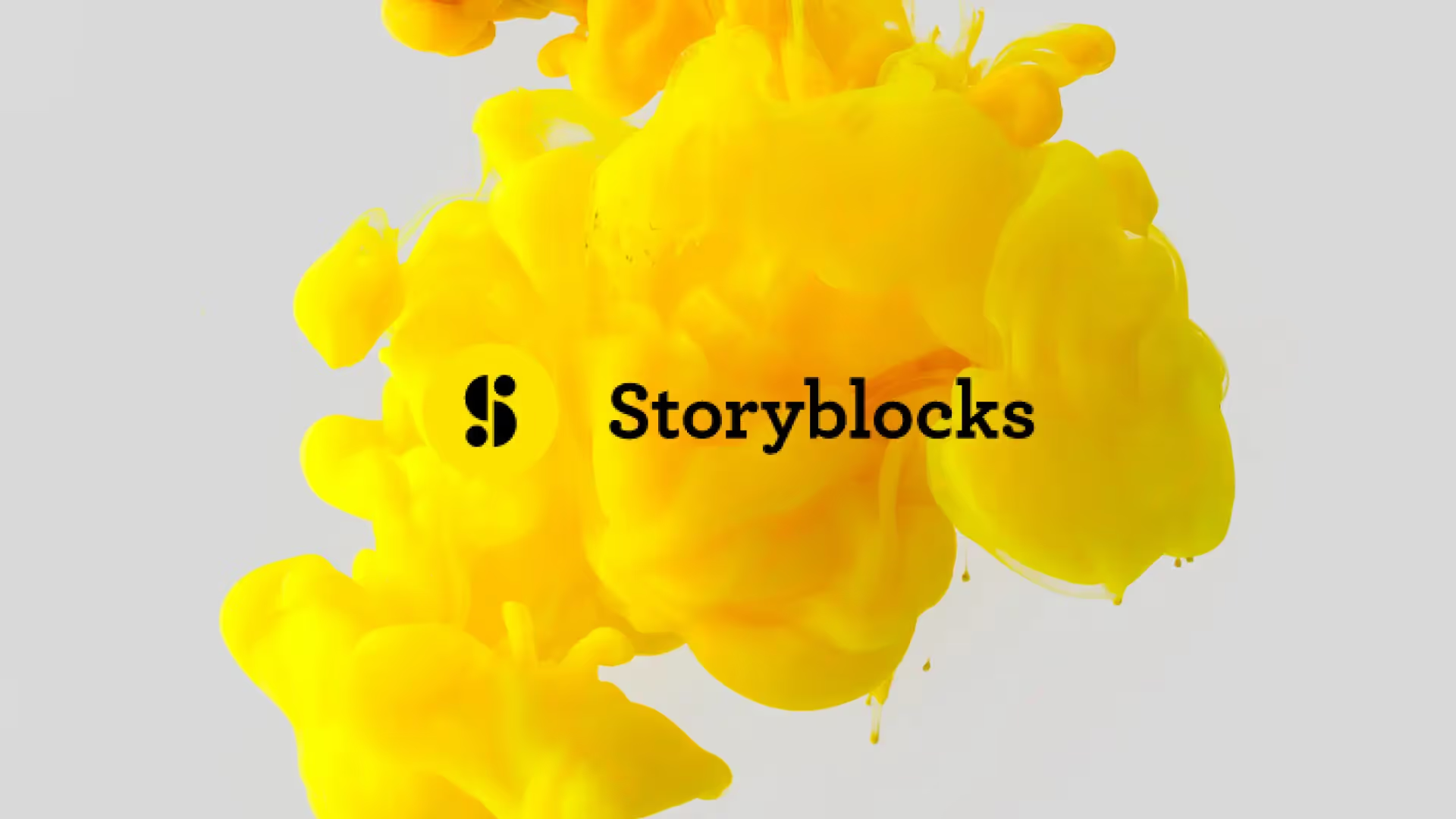
Storyblocks is aimed at creators who produce video or motion-heavy content. Its catalog includes HD and 4K stock footage, After Effects templates, music tracks, and sound effects—all covered by a license that supports commercial use.
The unlimited subscription plan starts at $30/month, making it accessible for YouTubers, educators, and content teams working with tight timelines. The site also features a browser-based video editor, so you can assemble rough cuts or social clips without third-party tools.
Search filters include resolution, length, format, and mood, which are especially useful when you need clips that match a script or voiceover. Unlike Freepik, which has limited video support, Storyblocks focuses entirely on motion and sound.
For anyone working in podcasting, online learning, or branded content, Storyblocks fills a unique need. It’s not meant for graphic design or photography, but if your work depends on strong visuals in motion, it’s a strong choice to keep in your creative stack.
15. Simplified
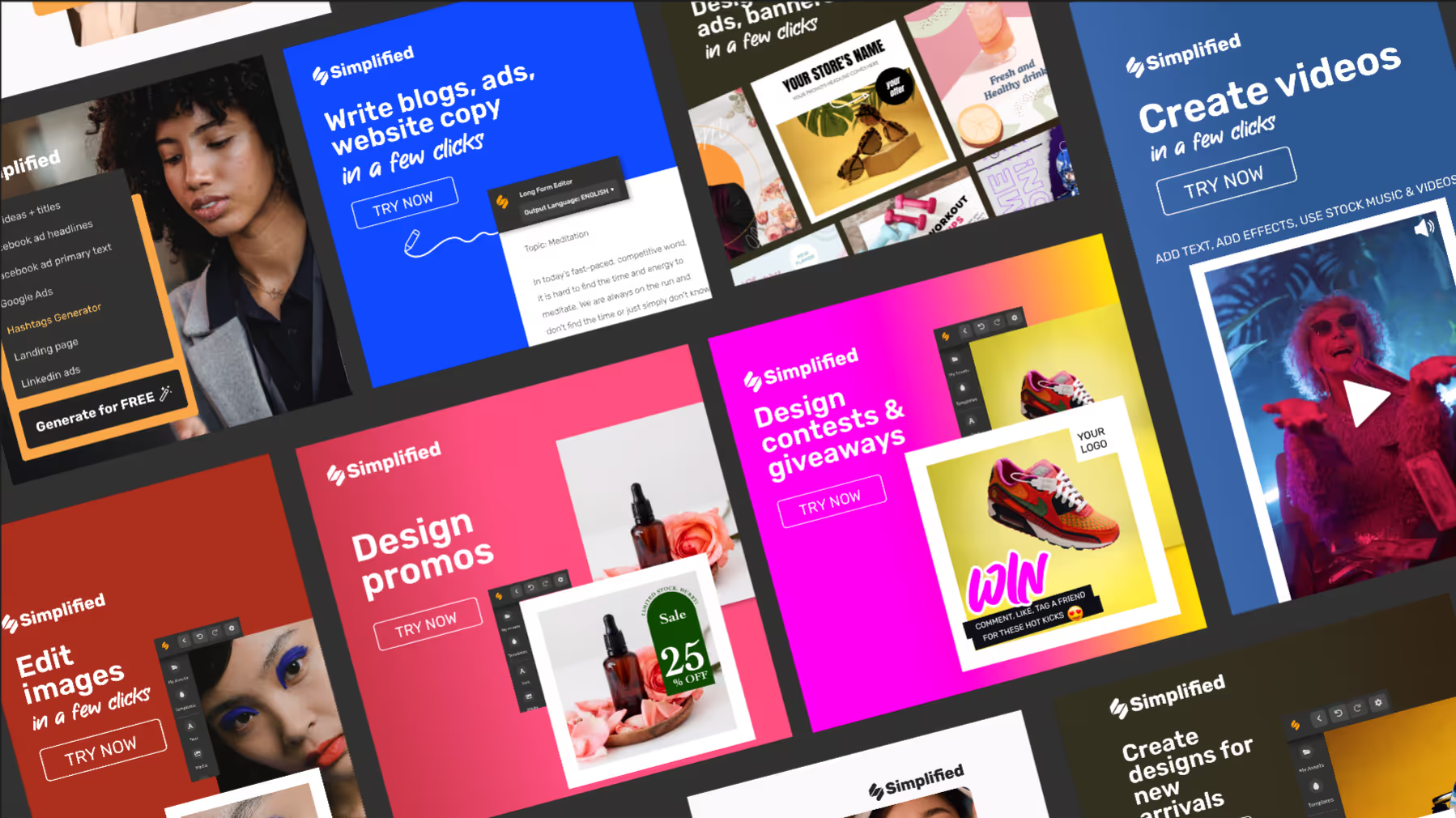
Simplified is built for creators who wear multiple hats—designing, writing, editing, and publishing all in one place. The platform combines design templates, stock photos, an AI text assistant, and social media scheduling in a single dashboard.
Unlike Freepik, which focuses on raw assets, Simplified gives you tools to build and manage your entire content cycle. You can drag and drop images, generate marketing copy, and even schedule posts to platforms like Instagram or LinkedIn without leaving your workspace.
The free version offers enough tools for basic use, while paid plans start at $6/month and unlock advanced features like custom fonts, premium visuals, and brand kits.
It’s particularly useful for social media managers, small business owners, or solo creators trying to maintain a presence without juggling five different tools. If your day includes designing, writing captions, and posting all before lunch, Simplified helps you keep everything in one workflow.
Conclusion
Freepik may be the starting point for many creators, but it doesn't have to be the only tool in your stack. Depending on your needs—photos, vectors, video, mockups, or templates—there are better-suited options out there. Platforms like Canva and Simplified support full creative workflows. Others like Shutterstock or Envato Elements offer broad libraries with clear licensing. Free services like Unsplash or Pixabay still meet daily demands without cost. Whether you’re a freelancer, team lead, or business owner, there’s no reason to limit your options. Pick what fits, and let the tools work around your process—not the other way around.



































